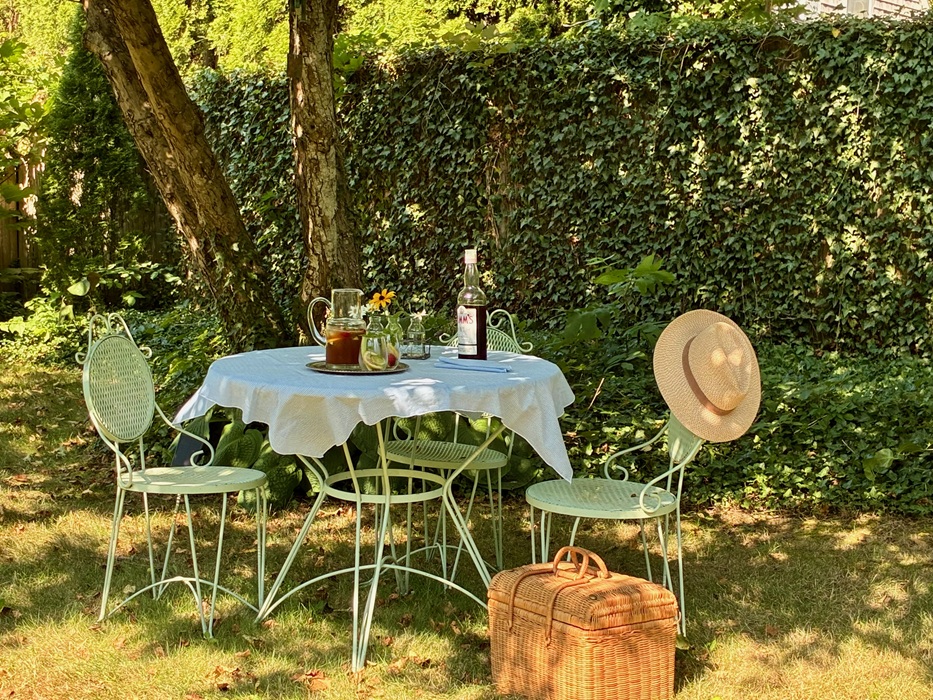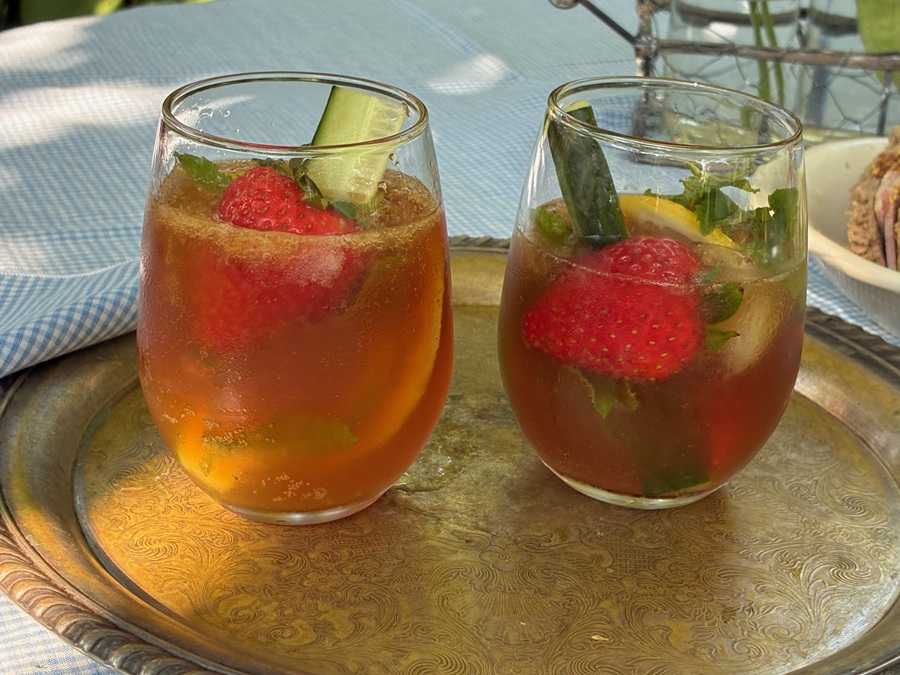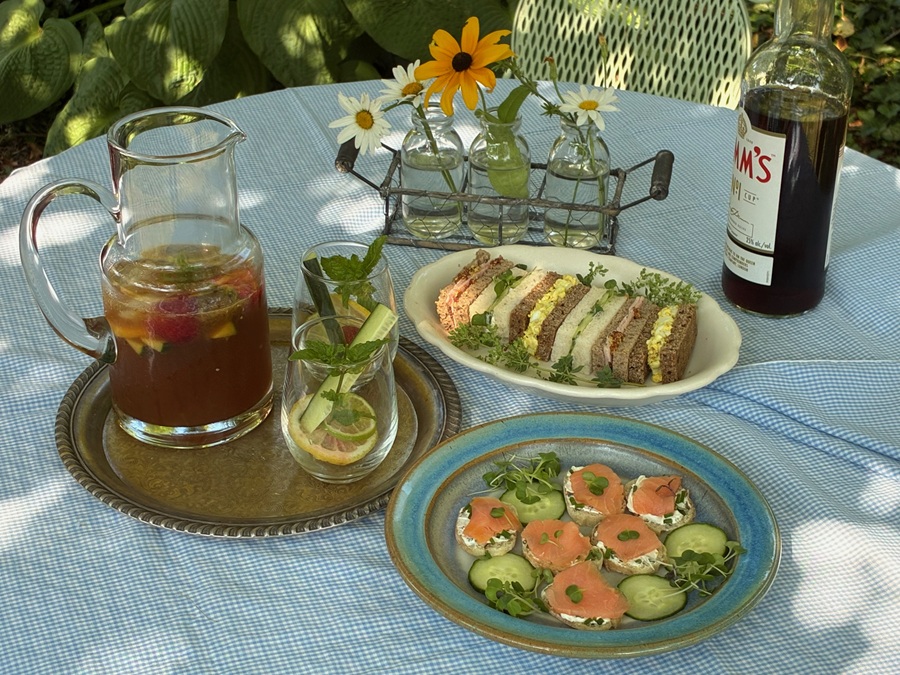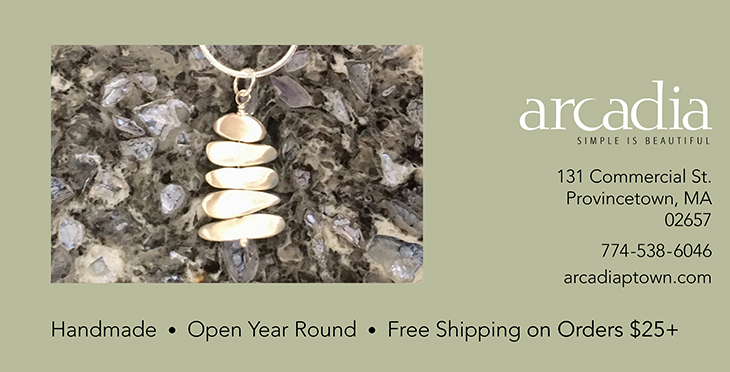Something about the summer weather this year, the cool rainy days between the warm, bright ones, triggered a memory of picnics in England. I was 22 and living in Cambridge, my first trip abroad. That may sound vaguely cosmopolitan, but I had never traveled beyond the eastern United States before, so every experience was heightened, and there was a lot to learn.
Right away, I found out that without central heating you needed long underwear to keep warm, and for going to the market in the rain, you needed a special poncho that fit over your bicycle handlebars. I learned how to punt on the River Cam and how to picnic in the rain.
The plan was to meet a friend for lunch between classes. “If you bring some sandwiches, I’ll bring Pimm’s,” Dolores said. I had no idea what she meant but decided to wait and see.

Imitating what I had seen of English tea sandwiches, I cut the crusts off white bread, filled one sandwich with egg salad and the other with cucumber and butter, and sliced them into triangles. Just as we sat down on a park bench, it started to drizzle. My impulse was to pack up and go home, but Dolores pulled out an umbrella and a thermos. So, this was Pimm’s Cup.
She poured two glasses full, and we shared the sandwiches. Sipping the refreshing drink, we laughed and talked, comparing notes on how to fit in as Americans. Unaccustomed to “day drinking,” I went home afterward for a nap. Dolores finished off the Pimm’s and headed to the library before her next lecture. Last I heard, she was a full professor and had authored an important study of domestic architecture.
For me, that lunch was unforgettable. I took to initiating my own gatherings like those I glimpsed along English country roads: a car pulled over and a couple sitting at a portable table covered with a tablecloth, enjoying lunch — probably cucumber sandwiches and Pimm’s Cup, I always imagined.

It even made its way into the book I’ve been working on, “Desire Lines: A Memoir in Twenty Moments.” With over 50 years (and counting) as a journalist, I have quite a few moments to look back on besides that picnic. There’s a misadventure with a low-flying crop duster, for example, as well as a revealing conversation with a legendary cellist.
Researching the drink, I found that it’s easily made by the glass or pitcher and, unlike some cocktails, requires few ingredients. It starts with a gin-based liqueur flavored with fruit and spices called Pimm’s No. 1. This, combined with lemon juice and ginger ale, garnished with fruit or cucumber, and served over ice becomes Pimm’s Cup.
It is the signature drink at Wimbledon and across England in summertime. With its modest proof and refreshing taste accented by ginger and lemon, it became popular beyond Britain and is a favorite at warm-weather parties in New Orleans.
It was invented in London by one James Pimm; he first offered it as a digestif sometime before 1840. He is variously mentioned in historical accounts as a fishmonger and as the owner of an oyster bar. Pimm is also said to have been a wily businessman, concocting his health drink with low alcohol content to encourage patrons to order a second cup.
Subsequently, his gin-based beverage was bottled as Pimm’s No. 1, which is traditional in the cocktail, though different bases were added to the line later: No. 2 with Scotch, No. 3 with brandy, No. 4 with rum, No. 5 with rye, and more. The basic recipe is, according to the bottle label, “closely guarded.”
I decided to recreate the Pimm’s picnic with No. 1, and rain or shine on the Cape, its bright, dryish flavors can be just the thing, although I still love it best on a cloudy day.

As for the sandwiches, tastes have changed since that decades-ago time in England, and I now range beyond those dainty triangles. Consider curried egg salad, smoked salmon with herbed goat cheese, roast beef and horseradish, cucumber with dill and mayonnaise, brie and watercress, pesto with cheddar and pickles, olives and creamed cheese, chicken and chutney, ham with sweet butter, hummus with arugula, and shrimp or lobster salad.
The bread is important in tea sandwiches: fresh, soft white bread, crusts trimmed away, is traditional, but whole grain breads like pumpernickel and wheat provide nice contrast. I like to offer some of each, and sometimes I grill one of the breads for textural variety.
Use a light hand with the delicate fillings. This is not the time for thick chunks of cheese or chicken. Butter, mayonnaise, a creamy cheese, or Dijon contributes flavor, helps hold the sandwiches together, and keeps the fillings from making the bread soggy. Press cucumbers dry with a tea towel or paper towel before placing them on the bread and spread both halves with your condiment. Cut the sandwiches into triangles, strips, or squares and cover them before serving to keep them moist. If the sandwiches pop open, press them down lightly with your hand or a baking sheet.

Tea sandwiches taste best eaten as soon as possible after they are prepared and are especially well suited to a relaxed picnic in the back yard or at the beach. For traveling any distance, you want to pack them carefully and keep them well chilled until serving time.
As for Pimm’s Cup, the classic recipe calls for fresh lemon juice and ginger ale. For those prone to searching out special touches, Fever-Tree makes an unusual light ginger ale sweetened with fruit juice, which brings the other flavors forward. You can also substitute a clear, sparkling lemonade (that’s considered British style). For garnishes, a slice of cucumber or a twist of fresh mint will do or a combination with bright fruits like strawberry, lemon, lime, and orange. I also like to grate a little fresh ginger on top of each drink.
PIMM’S CUP
Makes one cocktail
2 oz. Pimm’s No. 1
1 oz. fresh lemon juice
Ginger ale to taste
Cucumber slice, fresh mint, lemon, lime, or orange wheels, halved strawberries, or grated fresh ginger as garnishes
Pour the Pimm’s into a highball or other 12-ounce glass over ice. Add the lemon juice and top with ginger ale, stirring to combine. Garnish as you like.



